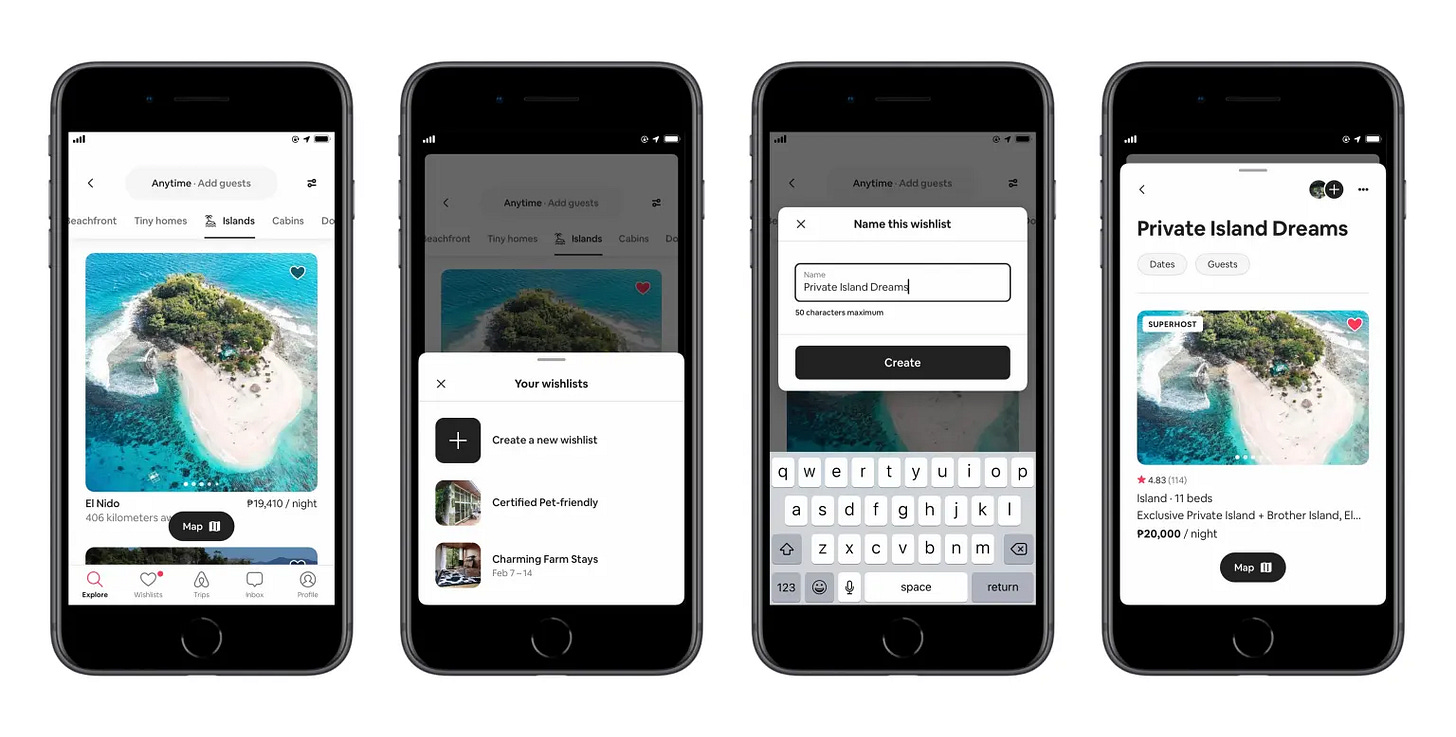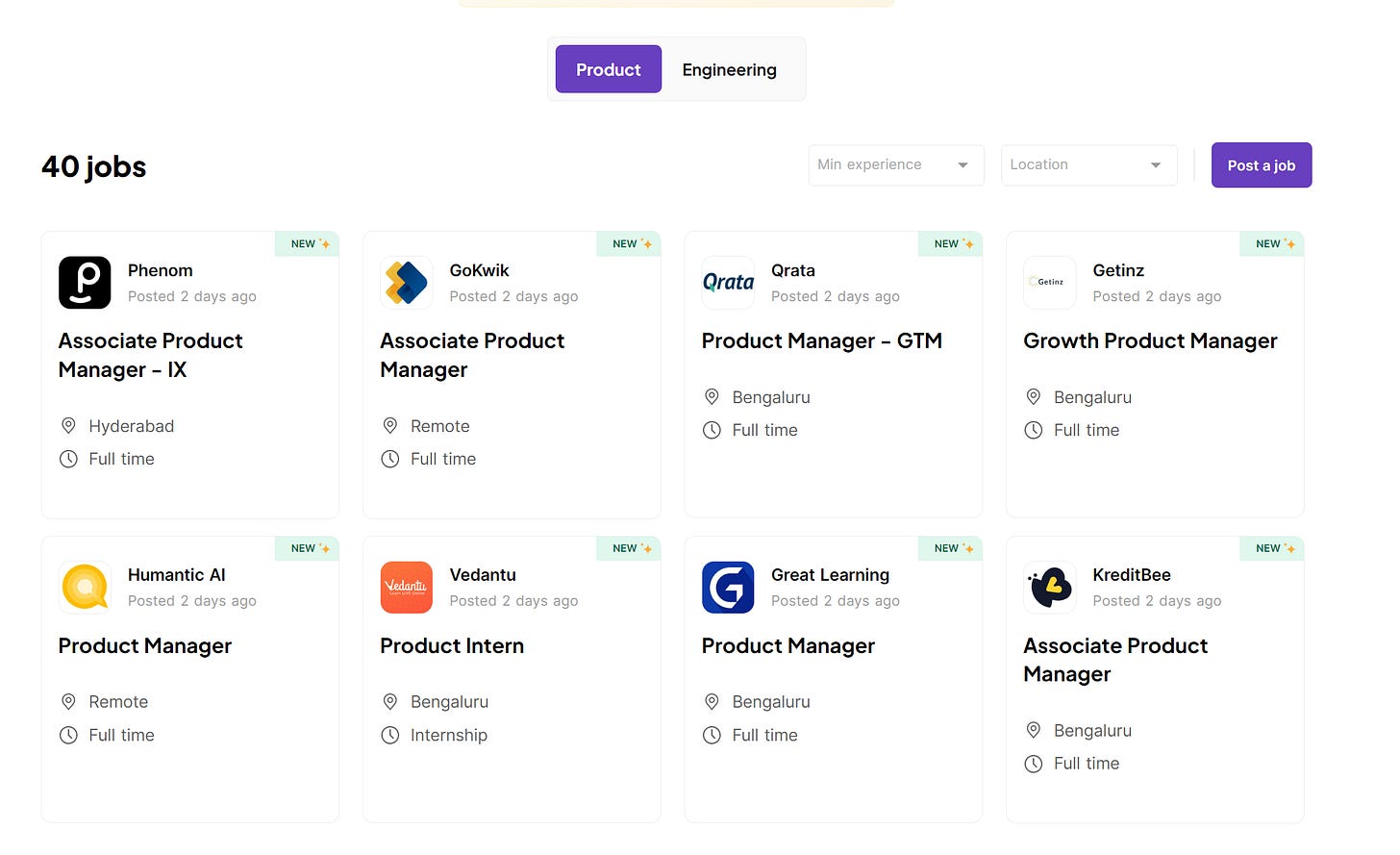🏡 Growth Hacks from Airbnb
In today's newsletter at Airtribe, we are delving into growth hacks from Airbnb, a chance for you to find out whether PM is for you & how to create product roadmaps!
Airbnb has been one of the poster child startups of Silicon Valley. They created a new category and witnessed phenomenal growth, snagging funding from top VCs like YC, Sequoia, A16Z, Greylock, and even Ashton Kutcher. Behind the scenes of their meteoric rise lies a series of interesting growth hacks they implemented to get the company noticed, and that’s exactly what we will be covering today.
How Airbnb started?
Airbnb, now a household name with a valuation of over $10 billion, began from a place of necessity. In 2007, founders Brian Chesky and Joe Gebbia were struggling to afford rent in their San Francisco apartment. Their innovative solution? Renting out three air mattresses on their floor and offering breakfast to their guests. This makeshift bed-and-breakfast laid the foundation for what would become Airbnb. They soon recruited a college friend, Nathan Blecharczyk, to join the team and build the website, leading to the launch of airbedandbreakfast.com.
#1 The first public launch & cereal entrepreneurship
The company's first significant public exposure came when it launched the SXSW site, securing two bookings. Despite this modest start, Airbnb's founders were undeterred. In 2008, they embarked on a unique fundraising strategy by selling "Obama O’s" cereal for $40 each before the election, raising $30,000. This capital allowed them to travel to New York City, where they went door-to-door, taking professional photos of listed properties to enhance their online listings.
Brian Chesky recalls the pivotal moment when New York's market embraced Airbnb, "When New York took off, we flew back every weekend. We went door to door with cameras taking pictures of all these apartments to put them online. I lived in their living rooms. And home by home, block by block, communities started growing. And people would visit New York and bring the idea back to their city.
#2 Craigslist Hack
In 2010, Airbnb ingeniously expanded its reach by leveraging Craigslist's massive audience, despite no formal integration between the platforms. They engineered a bot that facilitated the cross-posting of Airbnb listings onto Craigslist. This bot navigated Craigslist's system to generate a unique URL for each listing, enabling Airbnb hosts to advertise their spaces on Craigslist directly. This technical workaround was crucial for Airbnb to tap into Craigslist's extensive user base, bypassing the platform's limitations like anonymous email functionalities to link potential guests directly to Airbnb's site.
This growth hack significantly boosted Airbnb's visibility and user base. By presenting Airbnb listings on Craigslist, the company offered a more detailed and personal alternative to Craigslist's generic ads, attracting a larger audience to Airbnb's platform. The result was a notable increase in bookings and profitability for hosts, demonstrating the effectiveness of Airbnb's approach in using technical solutions to overcome marketing challenges and fuel its growth in the competitive lodging market
#3 Optimizing the funnel
Airbnb's journey to enhance user experience began with a simple yet profound realization: the quality of listing photos directly influenced guest bookings. After observing firsthand the impact of poor-quality images on their New York listings in 2009, founders Brian Chesky and Joe Gebbia decided against the conventional digital approach of merely educating hosts on photography. Instead, they opted for a hands-on solution—renting a high-quality camera and personally photographing host properties. This initiative dramatically increased bookings, doubling the company's revenue in New York and indicating a similar need in other major cities.
Recognizing the scalability of this solution, Airbnb launched the professional photography program in 2010, allowing hosts to easily schedule professional photoshoots. Initially employing 20 photographers, the program's success was immediate, leading to listings being booked two and half times more frequently and significantly increasing hosts' earnings. By 2012, the program had expanded to over 2,000 photographers capturing 13,000 listings globally. This strategic move not only improved listing quality across the platform but also underscored Airbnb's commitment to creating the perfect user experience by focusing on what users truly valued—clear, appealing visuals of their potential stays.
#4 Building Trust with Airbnb Social Connections
In 2011, Airbnb introduced a feature called Airbnb Social Connections, utilizing Facebook Connect to tap into users' social networks. This innovative feature displayed mutual friends who had previously stayed with a host or who were connected to the host, directly on the listing page. At its launch, CEO Brian Chesky highlighted the immediate impact of this feature, revealing an impressive 16,516,967 existing connections within the Airbnb community.
This feature not only enhanced the platform's trustworthiness by leveraging personal connections but also significantly enriched the user experience by making stays feel more secure and personalized. The success of Airbnb Social Connections underscored the power of social proof in the sharing economy, fostering a sense of community and belonging among users worldwide.
#5 Wish List
In 2012, Airbnb introduced the Wish Lists feature, transforming how users interacted with the platform. Within just four months, 45% of users were engaging with Wish Lists, creating over a million of them. This feature evolution began with a simple yet impactful change: replacing the generic star icon for saving properties with a heart, which unexpectedly boosted engagement by 30%. Joe Gebbia, co-founder, saw the heart symbol as a gateway to realizing the platform's larger potential, moving beyond mere accommodation searches to fostering aspirations and dreams.
Wish Lists not only made saving and sharing properties easier but also enriched the Airbnb experience by encouraging exploration and discovery. They allowed users to curate lists of dreamy escapes like "It Yurts So Good" and "Castles," turning the platform into a source of inspiration. This shift towards a more social and aspirational approach, much like the integration of social connections, distinguished Airbnb from its competitors, positioning it as a leader in social discovery within the travel industry.
These growth hacks, underpinned by a deep understanding of user needs and a commitment to enhancing the user experience, have propelled Airbnb into the Silicon Valley hall of fame, setting a benchmark for startups everywhere.
⛔ You should NOT become a product manager if…
☑️ Product road mapping & prioritization
Join us for a FREE masterclass with Aishwarya Rai, Product Manager at Sofy.ai!
Through this masterclass, you will:
👉 Learn to create effective product roadmaps
👉 Apply various prioritization techniques for product development & understand pros & cons of each
👉 Evaluate which prioritization technique would be the best based on the nature of the problem
Interested? Click here to register.
Job Board
That’s all for today, folks! Hope you enjoyed this week’s newsletter. We’ll see you next week. 🤗
Until then, keep learning and growing! 👋










